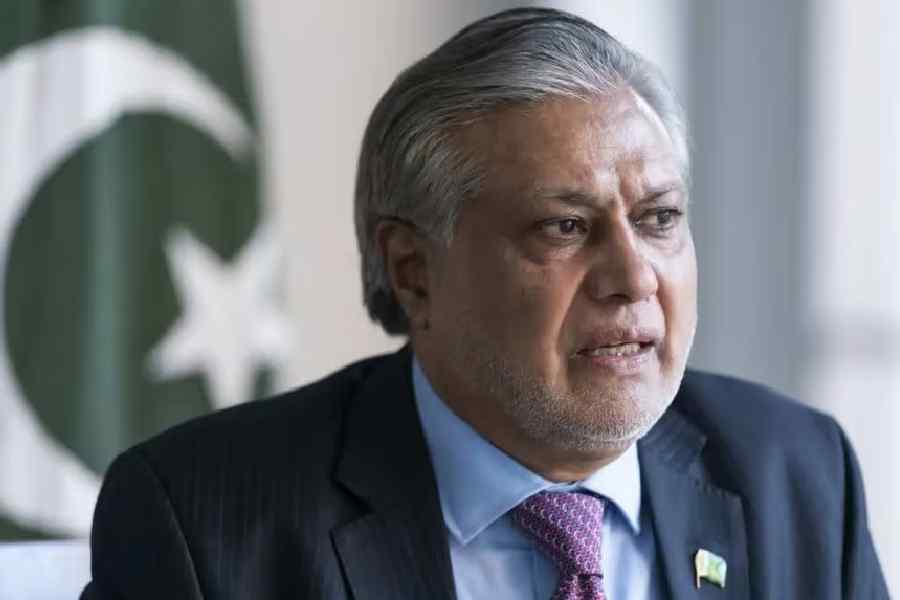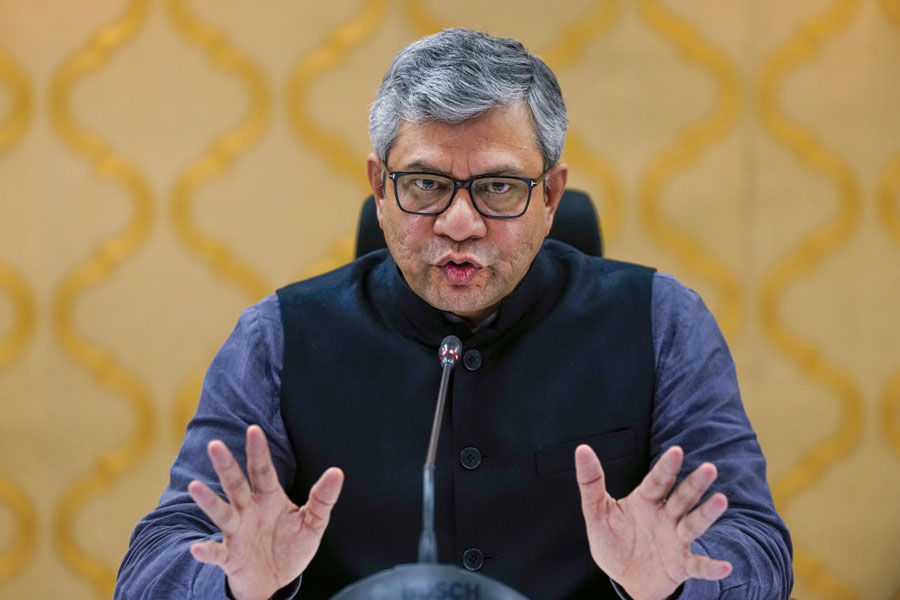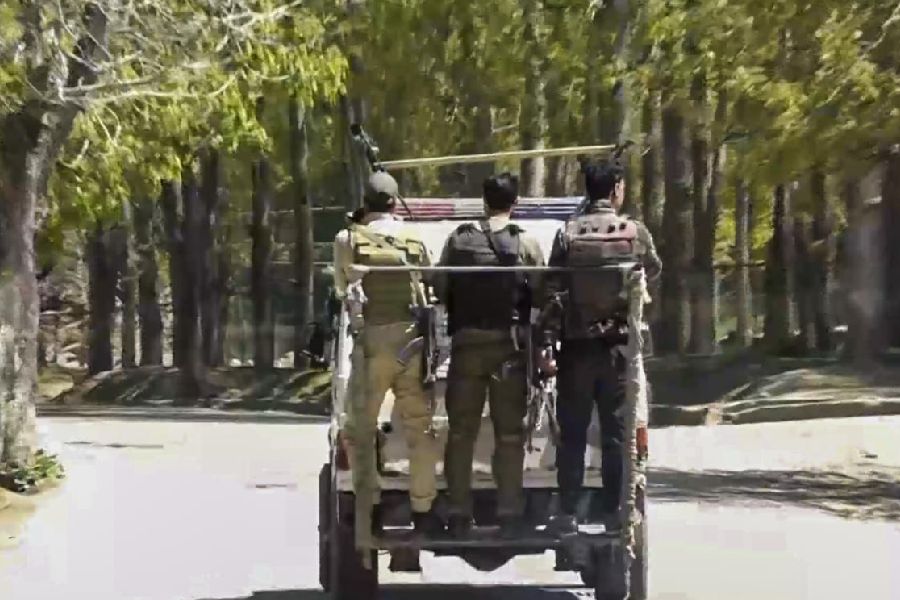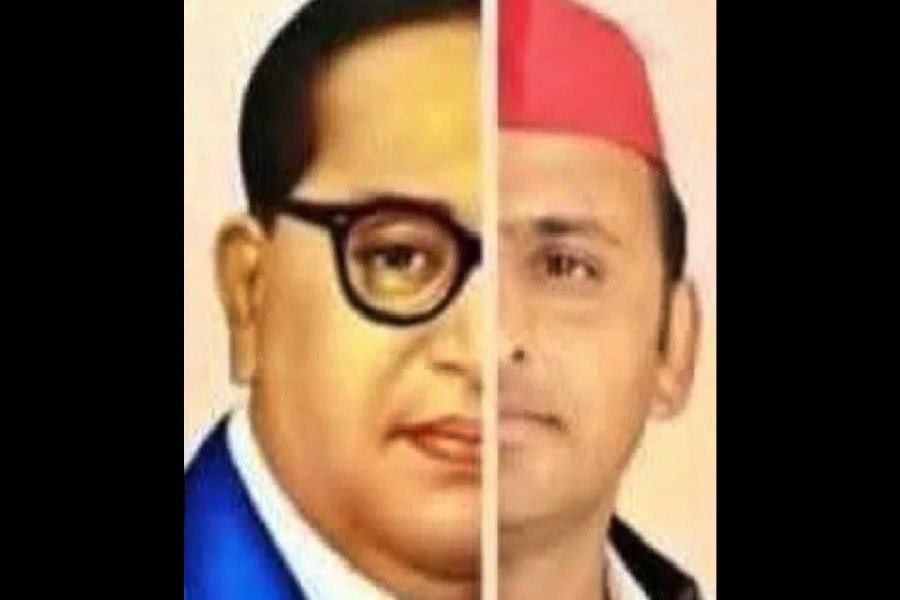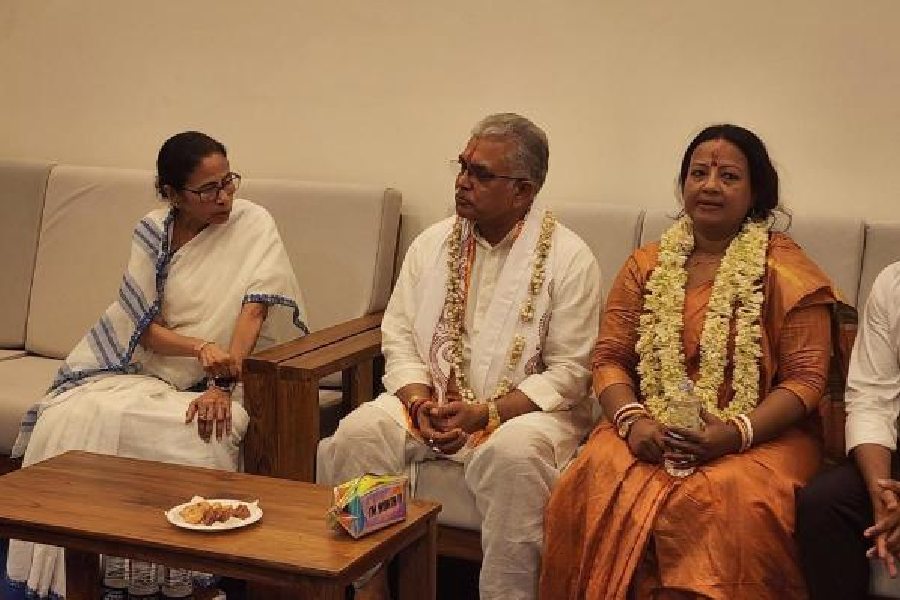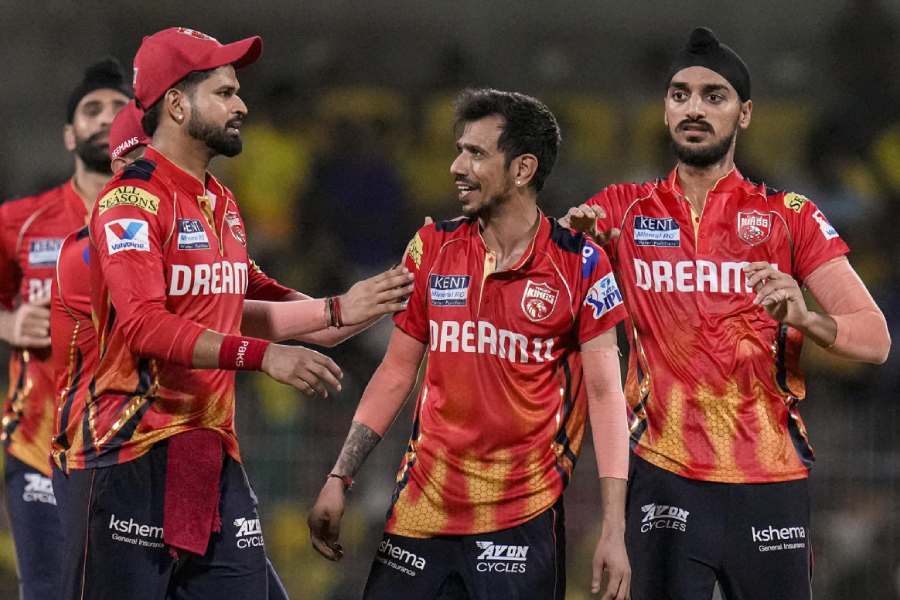 |
| Lord in mind, but where else? The Hanuman temple in the Mahabharata hero’s capital. A Telegraph picture |
A small, shabby shrine with a creaky wooden door and dirty white walls, where someone has painted a mace ? surely this can’t be a memorial to Krishna at the proud spot from where he supposedly ruled his Yadav kingdom?
It’s not. This is a Hanuman temple.
So this one must be it ? a prosperous-looking temple with a black, shiny floor and gleaming pink walls. Wrong: it’s Shiva who is worshipped here.
Further on, a third temple; but here again, the presiding deity is the very local Khodiyar Mata.
“That’s all,” says 65-year-old Devayat Ahir. “There are no more temples here.”
If this village 30 km from Junagadh town is where Krishna’s Dwarka lies buried, the earth has kept its secret well.
Devayat and 60-year-old Gijabhai Ahir, both illiterate, look puzzled as they are told that a remote-sensing specialist has decided after looking at satellite pictures that Balwala was the site of the “real” Dwarka. They have no idea what satellites and remote-sensing are, and they couldn’t care less. It’s the city people in Junagadh who are agog with Indian Space Research Organisation scientist Prabhulal Sundarjibhai Thakker’s theory.
All that the villagers know for certain is that the Ahirs, who dominate Balwala, “descended” from Lord Krishna. That’s hardly significant, though. The Ahirs belong to the same caste as the Yadavs in Uttar Pradesh and Bihar ? and all Yadavs claim to be descendants of the flute-wielding Mahabharata hero.
Thakker, though, is confident that when archaeologists dig up the earth, they’ll find that Balwala ? and not the coastal Dwarka town in Jamnagar ? is where the Ahirs’ divine clansman lived and ruled.
According to the scientist, a structure with a square base ?possibly Krishna’s palace or a fort ? lies under the village along with other ruins of his capital, spread across a 15-km radius.
Thakker says the nearby Girnar hills and a hillock corroborate certain passages in the traditional texts describing Dwarka. But the texts also have the mythological city near the sea, which is 80-90 km from this village.
The modern-day Dwarka in Jamnagar, however, is not only a coastal town but also has a Krishna shrine. So why doesn’t Balwala have one?
Ask any Ahir and he doesn’t even have to think before replying. Krishna doesn’t need a temple here; he lives in the people’s hearts. “Krishna is our lord. We belong to his Yadav clan; we are his descendants,” said Devayat Ahir. “He is part of our consciousness and existence. Why should he need a temple?”
It’s a surprising explanation from a people none of whom has studied beyond Class VII, the stage up to which the only village school teaches. The elders are mostly illiterate anyway. The men all work on the land: each family owns from 5 to 11 bighas, where it grows cotton and groundnut.
The Rabaris, the other community in the village, rear animals and sell milk. The two castes live in harmony but don’t intermarry.
However, it was infighting among Krishna’s clansmen ? “following a curse” ? that destroyed his kingdom before his eyes. The Yadav king later died a dejected old man, shot in the foot by a hunter ? as another curse had decreed he would be.
Dwarka, thus, in many ways, represents defeat for the hero after the exploits of Mathura, Vrindavan and Kurukshetra. Maybe the God who always concealed his real thoughts and intentions from mortals prefers to hide the site of his final failure.


